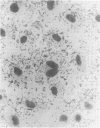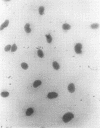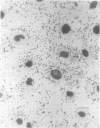Abstract
Usually only Kanagawa-positive strains of Vibrio parahaemolyticus are considered virulent; yet, a significant portion of V. parahaemolyticus food poisonings appear to be caused by Kanagawa-negative strains. Therefore, additional and more accurate measurements of a strain's food-poisoning potential are needed. Adherence of V. parahaemolyticus to human fetal intestinal (HFI) cells in vitro seems to offer this information. All strains of V. parahaemolyticus adhered to the HFI cells, but the degree of adherence was related to a number of factors. These included the age of the culture, the strain's Kanagawa reaction and source, the length of time the bacteria were exposed to the HFI cells, and the composition of the growth medium. Cells harvested during the late log phase of growth adhered more intensely than those harvested from the late stationary phase. Virulent strains, i.e., those involved in food poisoning, were observed to have a high adherence ability regardless of their Kanagawa reaction, whereas Kanagawa-negative strains isolated from seafood exhibited weak adherence intensities. Kanagawa-positive strains isolated from seafood adhered strongly to the HFI cells. The difference between the virulent and avirulent strains was quantitative in nature, and the greatest differences in adherence intensities were observed after short (10 to 15 min) exposure times. The presence of ferric iron in the growth medium was found to increase the adherence intensities of the virulent strains.
Full text
PDF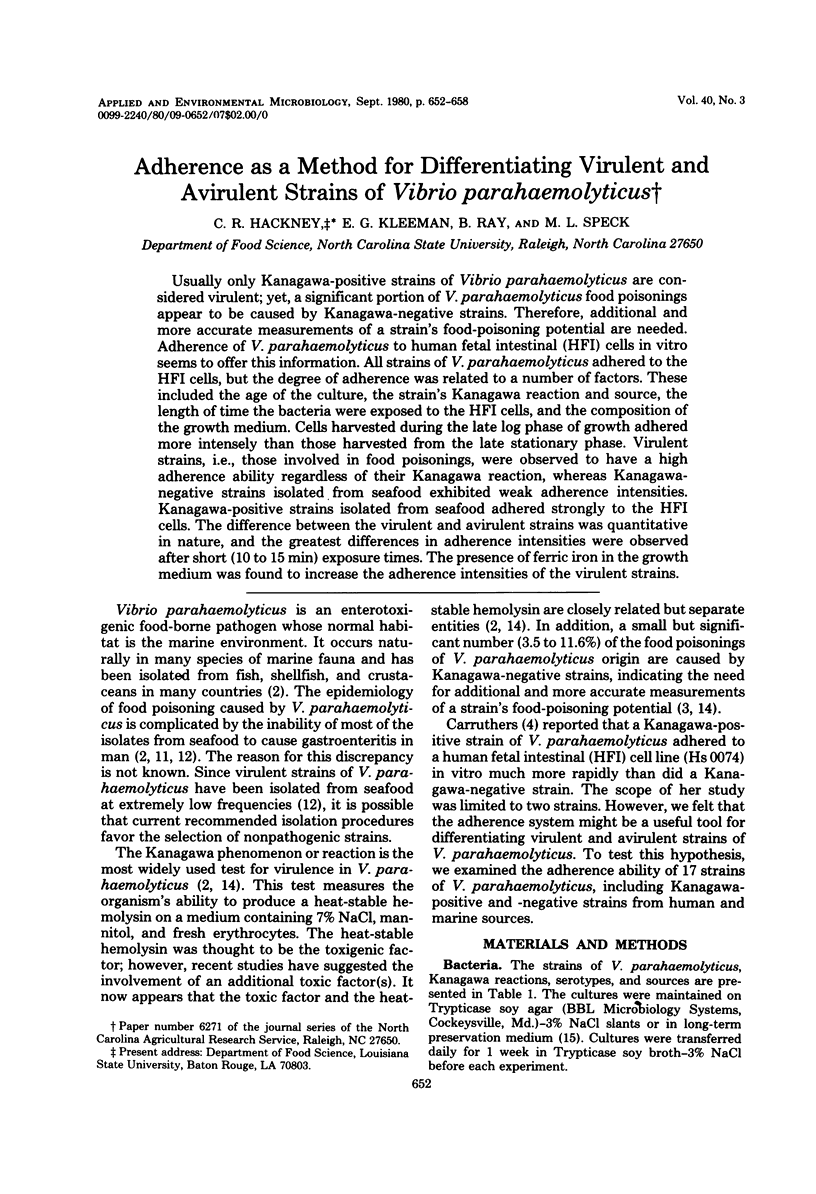
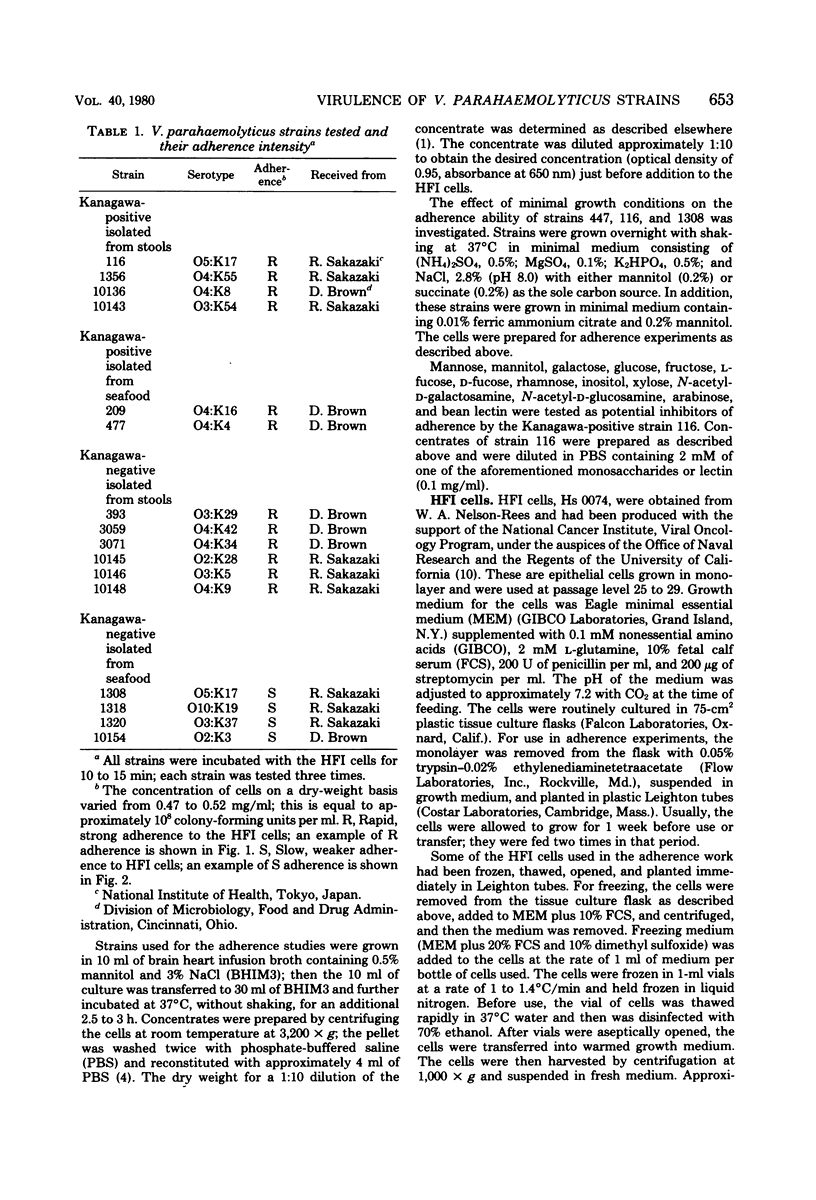

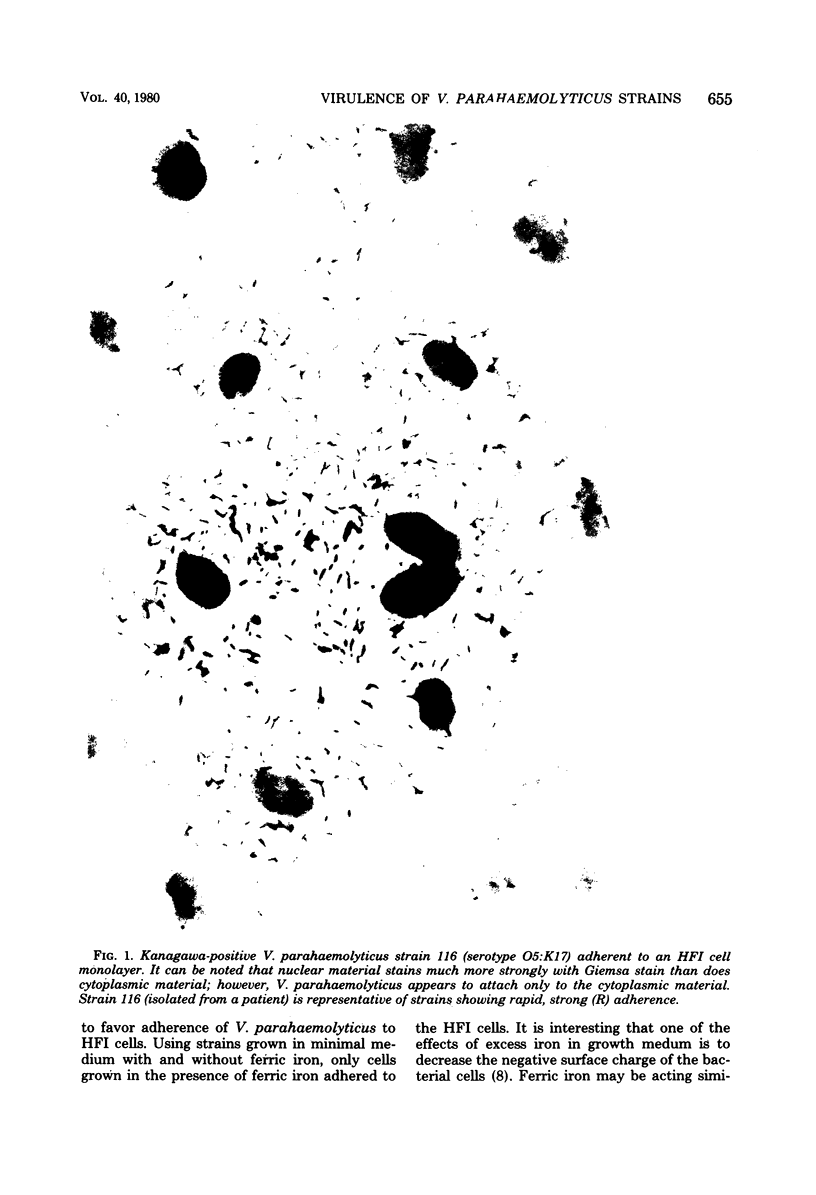
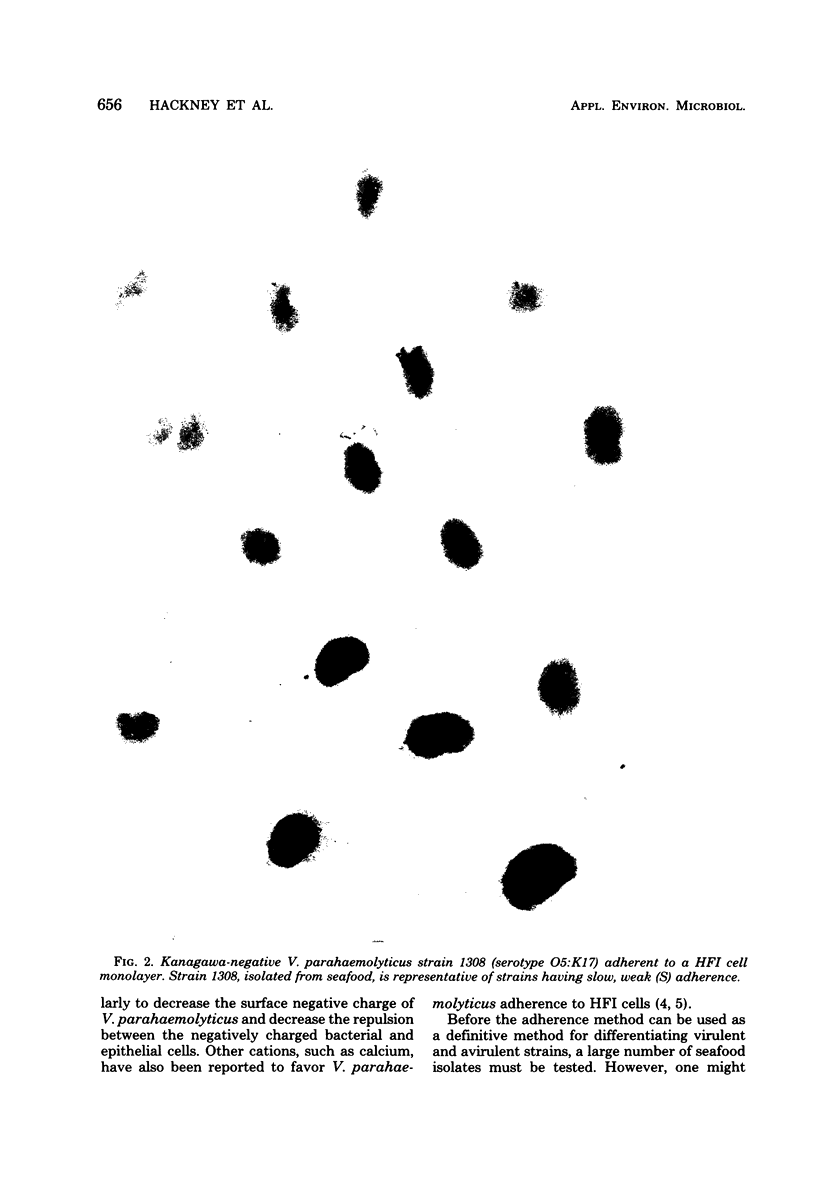
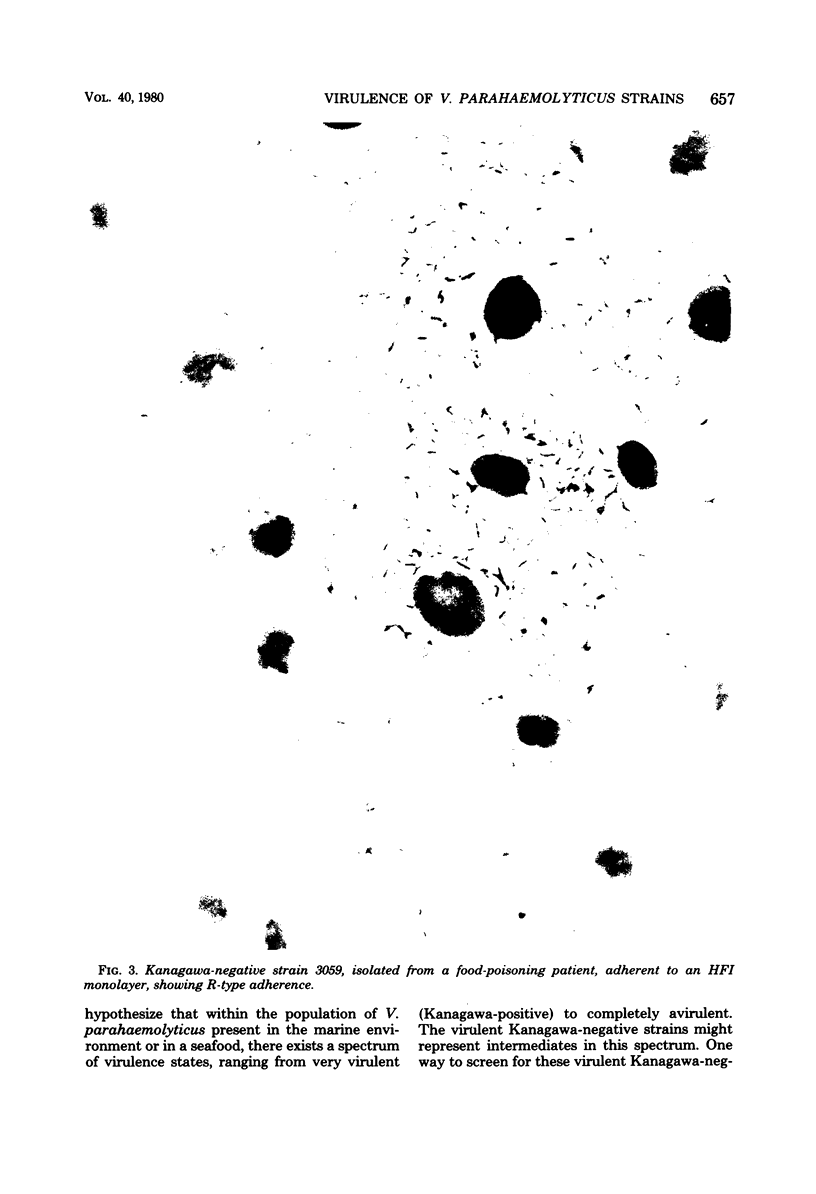
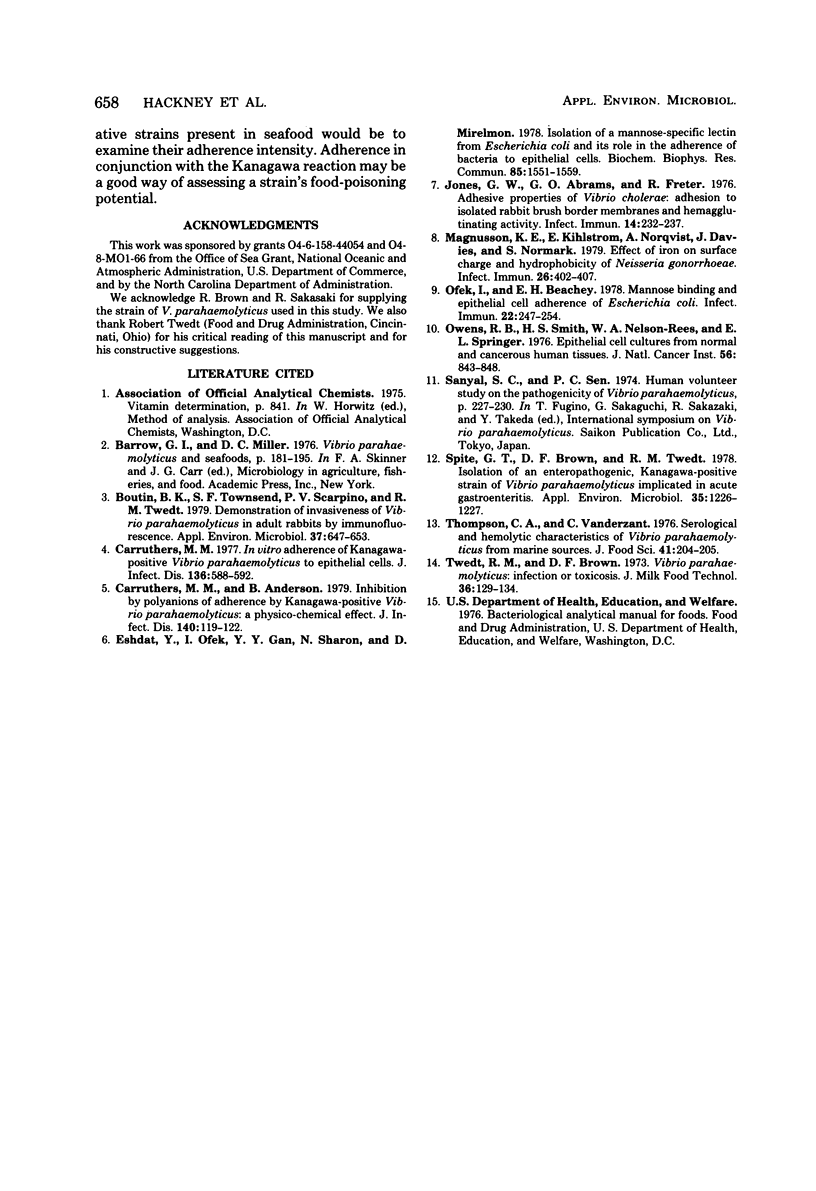
Images in this article
Selected References
These references are in PubMed. This may not be the complete list of references from this article.
- Barrow G. I., Miller D. C. Vibrio parahaemolyticus and seafoods. Soc Appl Bacteriol Symp Ser. 1976;4:181–195. [PubMed] [Google Scholar]
- Boutin B. K., Townsend S. F., Scarpino P. V., Twedt R. M. Demonstration of invasiveness of Vibrio parahaemolyticus in adult rabbits by immunofluorescence. Appl Environ Microbiol. 1979 Mar;37(3):647–653. doi: 10.1128/aem.37.3.647-653.1979. [DOI] [PMC free article] [PubMed] [Google Scholar]
- Carruthers M. M., Anderson B. Inhibition by polyanions of adherence by Kanagawa-positive Vibrio parahaemolyticus: a physicochemical effect. J Infect Dis. 1979 Jul;140(1):119–122. doi: 10.1093/infdis/140.1.119. [DOI] [PubMed] [Google Scholar]
- Carruthers M. M. In vitro adherence of Kanagawa-positive Vibrio parahaemolyticus to epithelial cells. J Infect Dis. 1977 Oct;136(4):588–592. doi: 10.1093/infdis/136.4.588. [DOI] [PubMed] [Google Scholar]
- Jones G. W., Abrams G. D., Freter R. Adhesive properties of Vibrio cholerae: adhesion to isolated rabbit brush border membranes and hemagglutinating activity. Infect Immun. 1976 Jul;14(1):232–239. doi: 10.1128/iai.14.1.232-239.1976. [DOI] [PMC free article] [PubMed] [Google Scholar]
- Magnusson K. E., Kihlstrom E., Norqvist A., Davies J., Normark S. Effect of iron on surface charge and hydrophobicity of Neisseria gonorrhoeae. Infect Immun. 1979 Nov;26(2):402–407. doi: 10.1128/iai.26.2.402-407.1979. [DOI] [PMC free article] [PubMed] [Google Scholar]
- Ofek I., Beachey E. H. Mannose binding and epithelial cell adherence of Escherichia coli. Infect Immun. 1978 Oct;22(1):247–254. doi: 10.1128/iai.22.1.247-254.1978. [DOI] [PMC free article] [PubMed] [Google Scholar]
- Owens R. B., Smith H. S., Nelson-Rees W. A., Springer E. L. Epithelial cell cultures from normal and cancerous human tissues. J Natl Cancer Inst. 1976 Apr;56(4):843–849. doi: 10.1093/jnci/56.4.843. [DOI] [PubMed] [Google Scholar]
- Spite G. T., Brown D. F., Twedt R. M. Isolation of an enteropathogenic, Kanagawa-positive strain of Vibrio parahaemolyticus from seafood implicated in acute gastroenteritis. Appl Environ Microbiol. 1978 Jun;35(6):1226–1227. doi: 10.1128/aem.35.6.1226-1227.1978. [DOI] [PMC free article] [PubMed] [Google Scholar]



